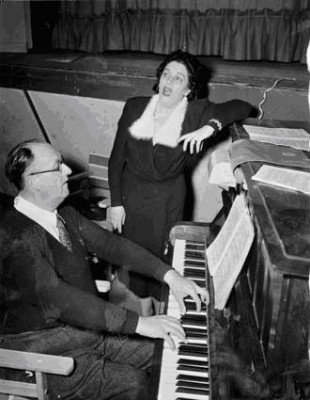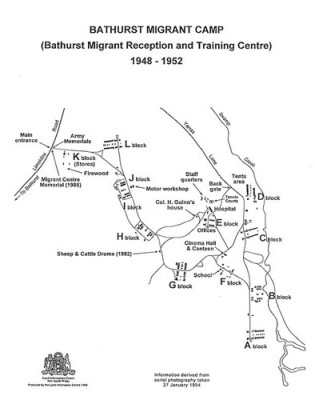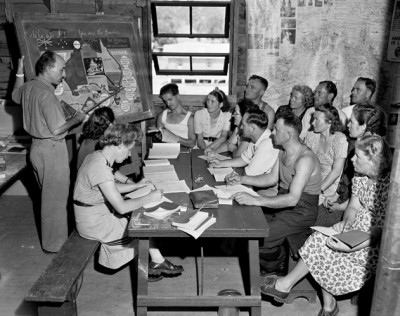In 1940 an army camp was established on a local property on the Limekilns Road at Kelso near Bathurst. The camp site was geographically isolated from the main town. This camp was originally built to accommodate the 1st Armoured Division A.I.F., but it was later decided that it would become an infantry training centre. Many units were trained in Bathurst before being sent overseas to Singapore, the Middle East and New Guinea.
In 1949, when they blockaded Berlin, I thought if the Russians came I’d be against the wall. I was asked ‘Where would you like to go?’ ‘Wherever I can go’ ‘Australia is the best place for you’
Sam Lihos
At the end of the war the army camp became a migrant reception and training Centre for European refugees and displaced persons. It was one of the major migrant reception centres in Australia, accepting around 100,000 migrants between 1948 and 1952.
They brought us to a railway station and put us on a train at 9 o’clock to the Kelso camp. We got a room in a hut and Bill had to get blankets and food. We were there for three weeks. We had cabbage and carrots – we never had anything else.
Bill Klooster
The accommodation was basic army surplus style of unlined, unheated iron sheds and timber barracks which were freezing in winter and hot in summer. The army camp was used because there was a housing shortage in New South Wales and other states after the war and very little other accommodation available for migrants. Many of the barracks were in very poor condition and needed constant repair. For single people, narrow iron beds set out in dormitory style made up their quarters while the married quarters were partitioned off into separate sections. There was no privacy.
The Bathurst Migrant Camp, like the one at Parkes, was a stopover before migrants were resettled elsewhere where there was work and opportunities. Most migrants only stayed for weeks or at the most a few months.
Despite this a school operated at Bathurst from January 1949 to May 1952. As part of the overall Assimilation Policy, these classrooms were also used in the evening for Adult Education, where migrants were encouraged to learn basic English and were introduced to Australian culture.
When it closed in April 1952, the camp was a fenced area of 3.5 square miles consisting of 11 self-contained residential blocks capable of accommodating up to 6,000 people in reasonable comfort. The camp housed the usual communal kitchen, school and ablution blocks and was considered to be self-contained township and separate from the wider Bathurst community. However the original army camp had been equipped to house only 1,500 soldiers so, with the migrant influx, there was the inevitable overcrowding and a tent city quickly grew. Between 1948 and 1952 the Bathurst Migrant Camp housed nearly 100,000 people. The total population at any given time was 8,000.
We got to Sydney in the daytime. In the night time they got us off the boat and we travelled all night by train to Bathurst migrant camp. I was given hot cocoa and afterwards we got breakfast.
Helen Lihos
Upon arriving in Sydney, migrants travelled by train to Kelso Railway Station and by bus to the Migrant Camp. What the migrants faced was the Camp boom gate they had to drive through which was then lowered immediately afterwards.
 New Australians stage ‘Tosca’ at Bathurst Migrant Camp c.1951. Courtesy National Archives of Australia
New Australians stage ‘Tosca’ at Bathurst Migrant Camp c.1951. Courtesy National Archives of AustraliaDespite the difficult conditions, it was at Bathurst Migrant Camp that the first New Australian Opera Company was formed and performed Tosca for the camp residents and the people of Bathurst. In 1949 the first Tygodnik Katolicki (Polish Catholic Weekly) was established and operated until the closure of the Camp when it moved to Melbourne. In 1950, a Polish Club was also established here. However the 1950s was the era of ‘assimilation’. This meant that migrants were expected to abandon their culture and language and ‘blend in’ to the Australian way of life.
The camp was closed in 1952 along with most other New South Wales regional camps when the Villawood Migrant Centre opened as the main migrant accommodation facility for New South Wales. The Villawood Migrant Centre, developed from 1949, is one of the largest and longest-running migrant hostels in Australia following World War Two, and is now the only hostel.



